Introduction
Over the course of many centuries, there have been numerous instances of natural earthquakes causing great catastrophes to human beings and destroying infrastructure, which has proved to be very costly (Booth 1994). According to Booth (1994, p. 45), the combined monetary value of the damage caused cannot be easily estimated in terms of numbers and the priceless worth of lost human life, because the phenomenon is unavoidable. According to Booth (1994, p.49), the earthquakes have in the course of history impacted adversely on human lives and infrastructure and will continue to do so in the contemporary setting as well as in the future. Different researchers have agreed that earthquakes are a phenomenon, which cannot be avoided or controlled in any way, shape or form (Historic earthquakes n.d). Day (2002, p.40) among other authors have suggested that the most appropriate strategy to tackle the ever growing issue of the effects of the seismic activities is not to try to prevent the natural disaster itself but to develop human structures, which are able to absorb or resist the energy generated by the earthquakes. In an ideal world, modern day structures should be capable of withstanding earthquakes (and the shock waves caused by them), thereby avoiding building collapses and as a result, avoiding fatalities (Day 2002). This paper will explore the events of natural earthquakes to discover the result and understand how earthquakes as occur and develop strategies to use to prevent the destructive effects of earthquakes on infrastructure. According to Day (2002, p.12), the key areas to consider include material choice for structures and buildings, energy absorbing/dissipating mechanisms, the working of frame and shear walls, which are used in the infrastructure, and the recent technological developments, which are directly used for the construction of earthquake resistant structures. The results of the study will provide the best methods to use to develop earthquake resistant structures such as the use of base isolated buildings and energy damping mechanisms to absorb or reduce the energy caused by earthquakes to preserve the integrity of buildings. By having a clear objective, as well as identifying potential areas which require increased attention to detail and commitment, I believe I will be able to produce good quality work.
The main objectives of the study are outlined below.
- To study the effects of earthquakes on buildings
- Study different characteristics of earthquakes
- explore different case studies on earthquakes
- Investigate the development of earthquake resistant structures
- Explore the use of base isolation systems
- Explore the use of dampers to protect buildings from seismic vibrations
To explore the area of study, research will be based on the literature review of different earthquakes, earthquake resisting structure, the material used to make the earthquake resistant buildings, and the technologies available to create some of the most effective base isolated structures to maintain the integrity of structures during an earthquake.
Literature Review
Booth (1994, p.5) and several other authors have studied the structure of the earth and the effects of the movement of its crust on the environment and concluded with scientific evidence that the movements of the earth’s crust are the main causes of the devastating effects of the earthquakes, which have been experienced for many centuries in different parts of the world. According to Booth (1994, p.5), examples of regions, which have experienced earthquakes include and their seismic effects include Haiti, Japan, and Turkey, among other countries of the world. Japan is one of the most vulnerable countries to the disastrous effects of the earthquakes because it is classified as a region with many nuclear reactors, which are vulnerable to the effects of the earthquake. According to Booth (1994, p.25), number of destructive earthquakes have been recorded over previous decades within several parts of Japan, and the destructive effects are underpin the development of different technologies for use to address the problems that arise because of the adverse effects of seismic movements on human beings and buildings (Zekioglu, Darama, Karahasanoglu 2010).
A study by Day (2002, p.46) shows that in 2012, over 300, 000 people were either displaced or killed within the earthquake struck region of Haiti because of the effects of the 7.0 intense seismic vibrations (Yup Rocks: Rock Mineral, Fossil and Earthquake Photography 1989). According to Geological Survey (2012, p. 23-20), another aftershock was recorded that measured 8.0 on the same scale and the effects of the earthquake were a loss of – this 830, 000 lives. Research shows that scientists “have explored the structure of the earth to determine its structure” (Zekioglu, Darama & Karahasanoglu 2010). The results of the scientific studies have shown the earth to be a layered structure show, consisting of one layer on top of the other. Booth (1994, p.31) has “classified the layers into three distinct categories, which include the core, lower, upper mantles and its crust” (Zekioglu, Darama & Karahasanoglu 2010). Booth (1994, p.34) and Day (2002, p.46) agree that earthquakes do not cause deaths and are naturally occurring events which are impossible to avoid. According to Day (2002, p.46), the main causes of the human fatalities when an earthquake occurs is because of the destructive effects on the surrounding including buildings, bridges, and other structures. Typical examples include the effects of earthquakes on large man-made structures and buildings, which have been known to collapse under the influences of the effects of Earthquakes. The results are death to anyone whom is inside or within the vicinity of those structures. The cause of this damage on the buildings is simply a bi-product of the large forces which Earthquakes can create. Day (2002, p.344) has explored the earth and established that the earth’s crusts is made of several segments, which consist of the upper mantle, which are defined by the tectonic plates, which are known as the plate boundaries. When the plates move relative to each other, the net results are earthquakes at the boundaries of the plates. A study by Day (2002, p.34) shows that the plates exist in three different forms. Day (2002, p.35) argues that different plates exist as convergent; divergent, and divergent boundaries. The general structure of the earth is shown in the diagram below.
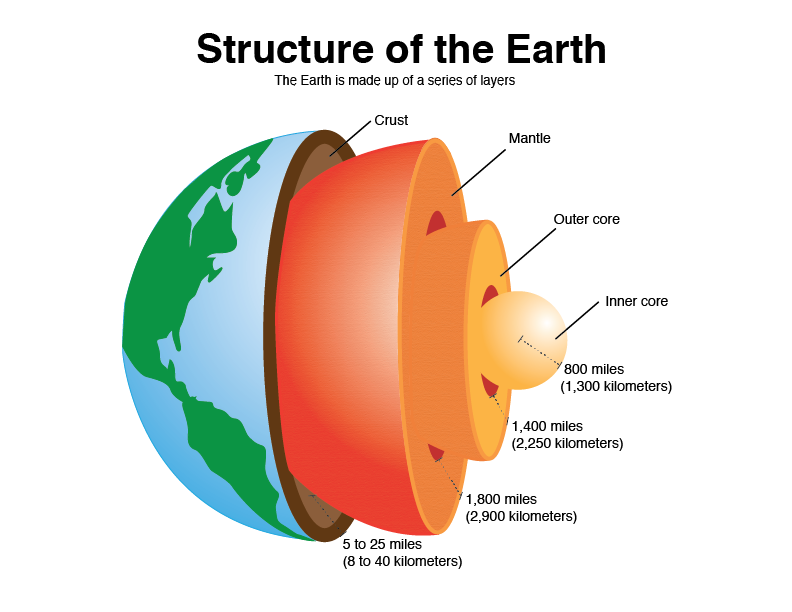
Convergent Boundary

A study by Zekioglu, Darama and Karahasanoglu (2010, p.56) and U.S. Geological Survey (2013,p.30) show that when the slides slide on each other, the movements leads to a compression effect, which causes the plates to crush against each other (Sahasrabudhe & Nagarajaiah 2005). When this type of movement occur, a huge amount of energy is created, which causes the two parts sliding towards each other to crash. According to Zekioglu, Darama and Karahasanoglu (2010, p.56), the collisions result in large amounts of energy, which is released as heat energy. The heat energy is the cause of the volcanic activities observed when earthquakes occur. It has been established that the frequency of earthquakes at the boundaries are very high. The movement of the plates either on each other or towards each other causes subduction or the continents to collide (Day 2002). The behaviour of the plates when they come into contact with each other and collide depends on the boundary conditions between the moving plates and their characteristics. Typically, the moving plates develop certain characteristics at the boundaries where the collisions occur (Day 2002). When a dense plate move relative to a less dense continental plate, the less sense plate moves above the denser plate because of the buoyancy of the continental lithosphere. Once such actions take place, mountains or oceans can be created as a result (Zekioglu, Darama & Karahasanoglu 2010). Another type of plate that is created because of the movement of the earth’s crust is the divergent boundary feature. When the two plates sliding towards each other are light and cannot subduct, there is the possibility that they crash into one another and cause large mountain ranges. One of the examples of the physical features, which occurred because of the seismic activities and collisions, is the Himalayas Mountains (Zekioglu, Darama & Karahasanoglu 2010). Convergent boundaries exist in one of the three forms, which include the oceanic-continental subduction zone where one plate is forced under the other, the oceanic-oceanic, subduction zone because of the formation of volcanoes, and the continental-continental collision zone, which results from the formation of mountains. Continental-continental convergence occurs when two continents meet head on and crash into each other (Zekioglu, Darama & Karahasanoglu 2010). A study by Zekioglu, Darama & Karahasanoglu (2010, p.34) and a number of other authors agree that the continental rocks are very hard and usually buckle when the continents move towards each other and collide. Several examples of the physical features, which were formed because of the collisions of the rocks against each other, include the Asian and the Indian features. Estimates show that the movements occurred in 50 million years ago. One of the examples of the occurrence of this feature is the Marianas Trench, which was formed when the Philippines palate slid below the pacific plate. When such formations occur, it is possible for the process to be accompanied by the formation of undersea volcanoes and when the process continuous for some time, a submarine volcano is formed, which exist as arc islands. The last type of convergence is the oceanic-convergence, which creates oceanic plates, which when they move create very strong earthquakes (Zekioglu, Darama & Karahasanoglu 2010).
Divergent boundary
The divergent boundary occurs when tow plates move in a linear direction ways from each other. The study shows that the “movement of the plates cause rifts between themselves and cause rift valleys” (Zekioglu, Darama & Karahasanoglu 2010). It has been “observed that most occurrence are noted when the oceanic plates move relative to each other” (The International News: New Zealand Earthquake Kills 65 2011). The movement of “plates away from each other causes the gaps to occur between the plates, giving rise to molten lava to rise and fill the gaps” (Zekioglu, Darama & Karahasanoglu 2010). Research has shown that “when convection currents occur in the earth, there is a possibility of the molten materials rising to the top of the asthenosphere of the earth, which takes place below the divergent plate boundary” (One Year After the Japan Earthquake: A Journey, Part 1 2012). The process leads the earth to create large temperature changes, and a reduction in the pressures, which leads to the melting of rocks and very strong earthquakes.
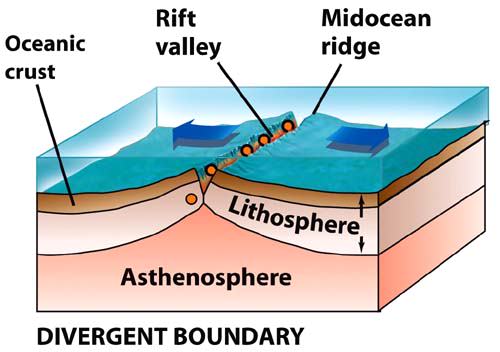
Transform-Fault boundaries
A study by GWeaver (2013, p.1) shows that the transom-fault boundaries in the earth occur when two plates slide on each other when moving in the opposite directions and usually occur in the ocean floors (Sahasrabudhe & Nagarajaiah 2005). The process is the main cause of the minor earthquakes, which occur at the sea and on land. Several of such examples” exist and one of them is the one referred to as the San Andreas Fault zone in California” (Earthquakes with 50,000 or More Deaths 2012). Research shows that such movements also occur on land.

The effect of Earthquakes on buildings
The seismic effects on buildings are because of the inertia and other forms of energy, which are generated when the earthquake shakes buildings (Axinti & Scheaua, 2010). Research has established that when the earth shales, it creates inertia, which is equivalent to the mass of the building, which are primarily concentrated at the floor of the building. It has been established that earthquake induced inertia forces’ line of actions are along the beams, slabs, columns, and walls. The position of the columns defines the type of forces acting on them. The lower columns experience higher forces than the columns at the higher positions of the building (Axinti & Scheaua, 2010). Different structures experience different effects from the forces and the materials used to construct the structures define the type of response to the forces. Structures made of concrete and steel experience the forces differently and respond differently to the forces. Typically, there are a number of different ways an earthquake can affect a building. Those methods include resonance, Liquefaction, and the P-delta effect, which are discussed below.
P-delta effect
The P-delta effect, which is also referred to geometric nonlinearity, is shown in the diagram below (Axinti & Scheaua, 2010). The effect is associated with an abrupt change in the ground shear stress because of the application of the gravity load due to the forces that act laterally on a building. The effect is caused by extreme forces, which occur on a very small displacement of the structure that has been affected (Axinti & Scheaua, 2010). It has been established that the seismic forces occur in different forms, which include the surface and body waves. (Axinti and Scheaua (2010, p., p.4) explored the forces, which act in the interior of the earth as shown in the example consisting of the forces P and F. A measurement of the waves referred as P show that they travel at the speed of sound in the solid bodies. Research shows that surface waves the primary cause of destructive effects of waves because they travel through the beams and pillars of buildings and into ling distances into the ground. When both forces, P and S are combined, the accumulative effects are due to lateral and vertical forces.

Researchers agree that the lateral movement of the forces are the main cause of damage on buildings. A study of the action of the p-delta effect forces shows that when the forces act vertically on a building, the effects are less damaging compared with the action of lateral forces (Harris 2012). The rationale is that buildings are designed to overcome forces that act on them vertically and not horizontally. Researchers have concluded that structures can be build with sufficient strength to overcome vertical forces, which act on the structures.
Harris (2012, p. 56) studied and determined that some other types of seismic waves, which include surface waves, have been shown to cause significant damages to the buildings they travel through because, when the waves travel through the building, they cause lateral forces to act on the structures, which end up causing severe damage to the buildings (Axinti & Scheaua 2010). A study to establish the speed and destructive effects of an earthquake show that an earthquake, which travels at the speed of 1 m/s and accelerating at 1 G has a magnitude, which is equivalent to 6.7. On the other hand, when an earthquake reaches a Richter scale of 5.0, it develops shaking amplitude, which is 20 times much stronger than one at 4.0 on the Richter scale.
Resonance
Axinti and Scheaua (2010, p. 40) and Day (2002, p.8) have discussed resonance in the context of the effects of seismic forces and define resonance “to be frequency content of the ground motion is close to building’s natural frequency” (p.34). When seismic forces act on a building, which is vibrating and the natural frequency of the building is the same as the natural frequency of the seismic force, then the building enters into resonance. Resonance may cause buildings to sway dangerously, which may lead to the failure of a structure to resist the forces acting on it and eventually the collapse of a building. The resonance of a structure depends on the height of the mass structure, the gravity and the structure of building (Axinti & Scheaua 2010). Axinti and Scheaua (2010) define the seismic movement the earth in terms of the amplitude, duration, velocity and direction of motion. The vibration, which causes the destructive effects on the building, is considered here to be the distance between successive crests. It is when the ground frequency is similar to the natural frequency of the building that they start to vibrate together and are said to resonate. The diagram below shows the behaviour of the building in response to the earth or ground motion, which is caused by an earthquake (Axinti & Scheaua 2010). It has been established that when a building vibrates, the period of vibration for each storey of a building can be obtained by multiplying the number of storeys by a factor of 0.1 so that a story with 10 floors when multiplied by 10 makes it 0.1, which is the resonance value f the building. The calculation underpins the reason why many tall buildings collapsed in Mexico when they were in resonance with the ground motion of the earthquake. Many of the tall buildings, which collapsed were 20 storeys and upwards because they developed a resonance of 0.2 seconds with the ground motion (Axinti & Scheaua 2010).
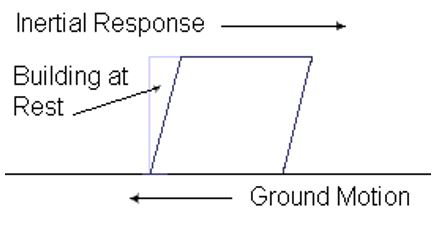
Earthquake-Induced Settlement – Liquefaction
The process of liquification causes the soil or sand to lose its stiffness and strength because of the saturation levels of the sand and soil. The behaviour of the sand and soil is in response to the movement of the earth, which leads or causes sudden changes in the characteristics of the sand, which causes it to behave like a liquid (Axinti & Scheaua 2010). The change (liquification) is caused by the contraction of sand, which increases the pores between the sand particles and allows water to move through the pores to the surface of the ground from the underground. Such situations occur in areas with a high groundwater table that is near the surface. Because of the loss of the shear strength of the soil and the liquification factor buildings in such areas sometimes sink and objects, which are buried float to the surface (Axinti & Scheaua 2010).
It has been established that the areas to address include continuity, regularity, stiffness, mass, and redundancy. Typically, continuity implies that the building has to be designed to resist lateral forces, which is a feature that is necessary for good performance of the systems (Axinti & Scheaua 2010). In addition, continuity enables the system to resist lateral forces, which are as a result of the application of continuous load path to the foundation. On the other hand, regularity implies that a building has to be designed appropriately to resist sudden changes in stiffness, strength, which occurs in the vertical and horizontal directions. It is possible for adjacent buildings to experience sudden changes in stiffness and strength when they are connected with each other (Axinti & Scheaua 2010).
Past Earthquakes in History: Case Studies
Loma Prieta earthquake
A study by Axinti &and Scheaua (2010, p.45) and other authors on the occurrence of earthquakes shows a train of history of different earthquakes with different effects. Many of the earthquakes have left a lot of destruction in their wake by damaging buildings and many other structures on the way. The damages are particularly because of the use of poor building materials, un-reinforced structures and masonry work, unsupported floor systems, and un-reinforced bricks. One of the memorable examples of the earthquake, which caused great damage on buildings, was the Loma Prieta earthquake (Booth 1994). According to estimates published at that time, 63 people died from the effects of the earthquake, over 3000 people sustained injuries, and when speaking on monetary terms, over $ 6 billion worth of damage were recorded. An investigation of the cause of the earthquake showed that the underpinning effect was because of the liquification of soil, which covered a stretch of a radius of over 110 km from the epicentre of the earthquake.
An investigation by USGS (2012, p.34) shows that intense damage occurred in the areas with loose soils, which could easily get liquefied because of the motion of the earth and the destructive effects of the earthquake. USGS (2012, p.34) explored the damage in terms of the infrastructure and notes that over 10 bridges of the Californian region were completely damages, 80 were in need of temporary support, and 10 were closed for major repairs. A picture of a building that was destroyed by an earthquake is shown below.

1964 Japan Earthquake
Another earthquake, which illustrates the effects of earthquakes on structures and buildings, is the 1964 Japan Earthquake. The earthquake was named after the name Niigata earthquake because when it happened, it caused significant damage as destruction of structures and buildings and the loss of life and other forms of property. According to the estimates by USGS (2012, p.45) provided statistical data on the destructive effects of the earthquake and shows. According to the report by USGS (2012, p.45), 36 people were reported dead from the effects of the earthquake, over 3500 houses were damaged, almost 400 people were injured, and 11 000 homes were damaged. Further to the damage caused by the earthquake, a tsunami of 4 meters high, which occurred because of the earthquake, hit the west coast of Honshu and Niigata causing substantial damage.
A technical evaluation of the cause of the damages due to the earthquake by USGS (2012, p.45) showed that the top soil on, which the structures and buildings were erected liquefied because of the forces caused by the motion of the earthquake. The liquification caused the soil to lose its mechanical strength and the ability to support the mass of the buildings standing on the soils, leading to their collapse. The consequences were a rise in the topography of the region by 150 cm, which later decreased by 45 cm.
The 2010 Haiti Earthquake
Another earthquake was the 2010 Haiti Earthquake, which occurred in 2010. The earthquake had a severity level of 7.0, and has been recorded as the worst in the history of mankind. The earthquake was very devastating, leading to the death of over 136, 000 people and leaving millions more people displaced. The worst thing was that most of the people in Haiti, who were affected by the earthquake, were very poor and lived on less than 1 dollar a day. According to Disaster Emergency Committee: Haiti Earthquake Facts and Figures (2011, p.1) and Plate Tectonics: the Story of Plate Tectonics (2014, p. 1) the Island suffered such a devastating loss combined with the level of the prevailing poverty, made the situation even worse.
A study of the tectonic plates of the earth and the position of Haiti on the plates shows that the island sits on the northern edge of the Caribbean plate, which lies on the southern region of the North American plate (Plate boundaries with major strike-slip components n.d). In addition, the island is positioned in a region where the major fault line, which consists of the plates, passes. Measurements showed that the epicentre of the earthquake was only 15 km from the Port au Prince, and it occurred at a depth of 10 km from the surface, which made the very severe and destructive. The results of the earthquake were destruction and a 12 cm tsunami, which was triggered in the Dominican Republic near Santa Domingo as shown below.
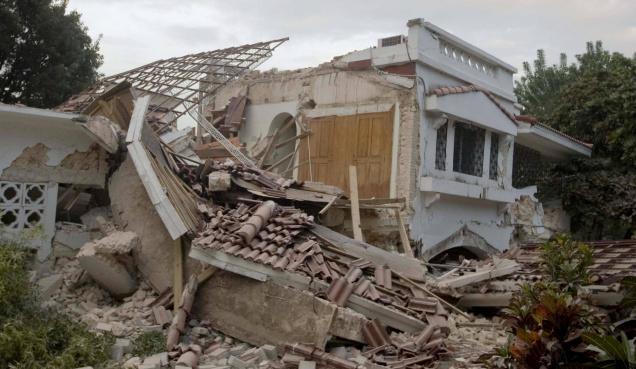
2011 New Zealand earthquake
A study of the case studies of the earthquakes, which have occurred in various parts of the shows that the 2011 New Zealand earthquake was one of the worst of its kind. According to USGS (2012, p.34), the 5.9 km depth earthquake occurred in the month of September 2010. The earthquake claimed a total of 110 lives and a total of two store buildings collapsed. Some of the casualties were as a result of debris that fell on moving objects such as buses and people (Booth 1994).
A critical analysis of the geographical causes of the earthquake showed that the movement of the earth caused the soil to liquefy and lose the mechanical properties, which could enable the soil to sustainably support the vertical masses acting on the soil, which was because of the effects of the buildings. Studies have shown that New Zealand lies on the boundary where the tectonic plates meet and the earthquake was analysed to be as a result of the sliding of the plates, which when they moved towards each other, caused them to compress and deform at the point where New Zealand lies. The earthquake was classified as an aftershock because it occurred four months after the one that happened in September 2010.
Developing the earthquake resistant structure
Day (2002, p.67) has suggested that one of solutions to the problem experienced on the destruction of buildings and other structures when the earthquakes occur is to develop earthquake resistant structures. Typically, the structures can be designed to offer seismic resistance to the effects of the earthquakes and sustain their functionalities (Constantinou & Symans 1992). One of the responses to the problem is to develop and use earthquake resistant materials. Once an earthquake occurs, an earthquake resistant structure has the highest probability of remaining intact after the seismic activity has been over as opposed to their counterparts (Constantinou & Symans 1992). Typically, the type of response a structure develops toward a seismic activity depends on the construction material that has been used to make the structure. Different materials have different mechanical properties and the use of the material depends on its mechanical properties and the cost of the material (Skinner & McVerry 1975). The underpinning rationale has been to use different design technique and methodologies (Day 2002). Different “earthquake design philosophies have been proposed” (Earthquakes with 50,000 or More Deaths 2012). Different material have also been developed such as the one developed by a Germany company, which was a proved earthquake composite construction material with the right properties to resist the active forces which are due to seismic activities (Day 2002).
Construction materials
A significant number of materials have been explored to determine the most materials for the construction of earthquake resistant structures (Day 2002). The underlying reason has been the choice of materials to use to put up a building or a structure, which has dependable mechanical properties, which respond appropriately to the occurrence of seismic vibrations. That is because the type of material the structure is made of determines to a large extent the resistance of the material to the effects of the seismic vibrations (Day 2002). For example, when a ductile material is used to make a structure, it is able to resist the effects of the applied loads until it reaches its yielding point. When a brittle material is used to support some load, it yields quickly when the applied load exceeds the point of failure (Day 2002). However, not one type of material can be used to make up a structure and a combination of different materials can b used to make an earthquake resistant building (Day 2002).
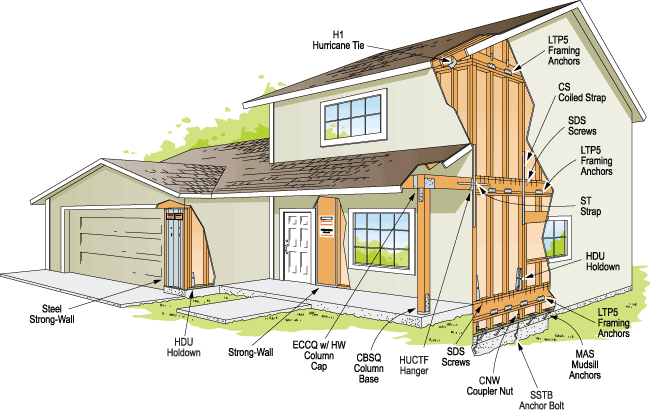
It is important to note here that the behaviour of the material, which are used for the construction of earthquake resistant buildings depend on the properties discussed below.
- High ductile strength
- High strength and weight ratio
- Homogeneous
- orthotropic properties
- full strength connections capabilities
The ductility, homogeneity, orthotropic properties, and high strength and weight ratio are critical properties that a designer of an earthquake resistant structure has to factor during the construction process (Skinner & McVerry 1975). It has been shown that changes in the size, width, and height of a building make the properties of the materials very critical. Designers agree that when the size of the building increases, more connections are established between the components of the structure and impact of the failure modes become very critical factors to consider in the design and construction work (Skinner & McVerry 1975).
Different studies have shown that engineers have studied the behaviour of different materials under the seismic forces and concluded that different materials with different mechanical properties are critical for the construction of earthquake resistant buildings. Typically, it has been demonstrated that for low rise buildings, the use of timber has been proved to be a satisfactory material, while high rise buildings have been shown to do better when developed using concrete. Dowerick (2009, p.67) argues that not only is it that certain types of materials are the only ones necessary for use to make the earthquake resistant structures, but a number of structural factors play a significant role, which include moment resisting frames, framed tube structures, structural walls (shear walls), concentrically braced frames, eccentrically braced frames, and hybrid structural systems (Day 2002).
On the other hand, the framed tube structures are designed to resist lateral loads. To achieve those goals, the structure is designed with a hollow cylinder, which is positioned or installed perpendicularly to the surface (Skinner & McVerry 1975). It is important to note here that the exteriors frame is designed to make the structure resistant to the applied loads. Other structural properties are designed into the structures to resist the different types of forces, which act on the buildings to overcome the effects of the forces (Day 2002). To address the problems associated with the construction of the buildings, the choice of materials is discussed below.
Steel
Steel is one of the commonly used materials in the construction industry. The critical properties of steel allow the material to be the most frequently used apart from the use of concrete. Certain types of steel make it suitable for use. Technical studies show that the properties of malleability and ductility make it suitable for construction purposes. Research has shown that the structures made from steel show high resistance to seismic forces which cause lateral and vertical forces to act on the systems without damaging them. Dowerick (2009, p.4) has discussed the use of steel as a construction material by showing that steel provides excellent abilities to make connections between different components viable, when properly welded and connected (Dowerick 2009).
Concrete
Concrete has been in use for many years in the construction industry and has been the most frequently used material when used in reinforced form. A lot of information is available about concrete and its properties. Research by Dowerick (2009, p.45) on the use of concrete shows the design factors necessary to make reinforced concrete suitable for use in earthquake resistant buildings. It has been demonstrated that when earthquakes occur, the slab-columns are subjected to heavy vertical loads because of excessive shear stress, which leads to low connection capability results in disastrous failures (Dowerick 2009).
Timber
Timber has been in use as a construction material because of its properties, which makes it suitable for use in earthquake prone areas. The properties, which make concrete suitable for use in the construction industry include its low weight to strength ratio, ability to accommodate other materials such as steel bolts for use to fasten different member structures.
A technical evaluation of timber as a building material is that it is highly combustible and requires skilled people to work on the timber to make is fire resistant. In addition, research shows that timber does not make connections between structures that can resist very high lateral forces, which can be applied on the buildings because of seismic forces. An assessment of the use of timber shows that it is a popular material for use in the construction of domestic buildings ((Dowerick 2009).
Research into the use of timber as a construction material has shown that it can suitably be applied in the construction of non-domestic buildings, and has widely been put to use to make commercial buildings. Dowerick (2009, p.75) argues that timber can be used to make structures that respond to seismic forces appropriately by faceting them with steel bolts, which behave as timber.
Earthquake Resisting Systems
Earthquake resisting systems are designed to resist the effects of earthquakes because the experience from past earthquakes shows that the problem requires critical attention. The rationale is that most of the buildings have been designed to resist forces due to gravity loads and not horizontal inertial loads, which are generated by the seismic motion of the earth and the applied vertical and lateral loads. The type of structure and the areas the structures are being applied determines the type of design to make. The other issues related to the design of earthquake resistant structure includes the social economic status, the type and cost of materials to use, the ease with which construction materials can be accessed, and the architectural and specific design requirements to meet. Typically, when an engineer designs an earthquake resistant structure, various factors have to be considered and each factor has its own weight (BCIT: Earthquake Effects n.d, viewed 2 June 2014). The most important areas to concentrate in include the ground design because it is at the ground that the structure makes contact with the earth the seismic activities act on the base of the ground.
Earthquake occurrences
Booth (1994, p.5) argues earthquakes can occur in such a way that their seismic activities take place in one direction only. Such an earthquake mostly produces shock waves because of the large impulsive motions on the ground. Such type of earthquakes can be measured in terms of the displacement traces and integrated velocity of the earth. The behaviour of the design depends on the characteristics of the earthquake, which are defined into different categories (Skinner 1975). According to Booth (1994, p.5), the “typical properties to consider when designing the earthquake resistant buildings are the characteristics of the ground motion” (Earthquakes with 50,000 or More Deaths 2012). The elements include the “amplitude, lobes of the pulses, the duration of the earthquake, displacement, acceleration, and velocity of the ground motion” (Earthquakes with 50,000 or More Deaths 2012). The materials, which fit into the description, must possess the inelastic and plastic properties to resist the forces, which occur as a result of the seismic activity.
According to Booth (1994, p.15), the long duration earthquakes have a Fourier occurring on the narrow frequency bands and a wider frequency and strongly influence the type of response to the seismic activity because they occur without a clear predominant period. The properties of the materials used to resists such types of earthquakes include the elastic, inelastic, and plastic materials. The long duration earthquakes can be classified into the one without predominant the other with predominant ground motion.
Studies by Booth (1994, p.25) show that earthquakes with severe ground motion with and big values on the Fourier spectrum require the use of materials with high tensile strength to resist the effects of the compression and pulling forces for the construction of buildings.
Different construction materials are used to make different structures, which are able to resist the effects of earthquakes on buildings. According to Skinner (1975, p.45), for a structure to resist the seismic effects of an earthquake, a combination of properties, which include shock absorption capabilities, inelastic and elastic strength must be factored into the design.
Base Isolation
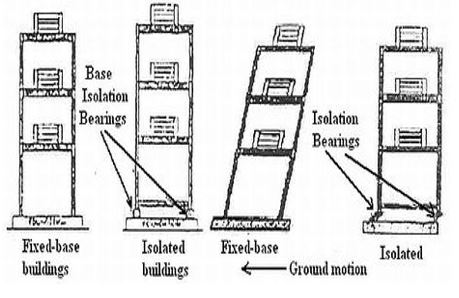
According to Day (2002, p.56), the base isolation technique provides one of the most advanced mechanisms of structuring a building to resist the forces generated because of the seismic activities. Day (2002, p.56) has observed that base isolation relies on number of devices, which in includes the multilayer elastomeric bearings, which are able to resist the action of vertical loads and provide a building with the lateral flexibility to make lateral movements during a seismic activity (Huang 2009). The purpose of the isolators, which are often made from elastomeric bridge bearings and other materials with a sliding capability and acting at the base of the building are to provide the structure with the sliding capability to resist and absorb the lateral forces (Kelly 1998). The base isolation design method is used address the weaknesses associated with the traditional construction style of laterally reinforcing a building to overcome the lateral forces that act on the structure. The concept of the base isolation method is based on designing a structure so that it is has a higher period of oscillation, which increases the ability of the structure to damp the seismic vibrations, which occur and, which belong to any of the three categories of earthquake types. A study by Sahasrabudhe and Nagarajaiah (2005, p.16) shows that when a building has a fundamental period of less than 1.0 second, it is possible to have the structure supported on single mass to be able to respond appropriately to the ground motion acceleration and deforming forces. Sahasrabudhe and Nagarajaiah (2005, p.16) shows that when a seismic activity of the magnitude mentioned, the forces can be absorbed by the force of gravity, which acts along the centre of the structure (Harris 2005). Sahasrabudhe and Nagarajaiah (2005, p.6) has written about base isolation and argues that the method has been a widely used model where the building at the point of contact with the ground forms a displacement relationship at the point of isolation with the ground. Typically, the argument by Sahasrabudhe and Nagarajaiah (2005, p. 89) shows that the point of contact the building makes with the ground making hysteretic and viscoelastic behaviours when the force acting on the building is vertical and the displacement direction is horizontal (Harris 2005).
Principle of the base isolation systems
The base isolation system operates on the principle that the building is decoupled from its foundation to ensure that when the seismic vibrations occur, the structural integrity of the building is maintained (Harris 2005). It is possible to use the base isolation technique for retrofits and for seismic design. A case study shows that a “base isolated building does not move when a building shakes because of a seismic activity, but rollers on which the building sits on are the ones, which move freely” (Earthquakes with 50,000 or More Deaths 2012). There is no transfer of force between the building and the ground, which is caused by the lateral movement of the earth when an earthquake occurs. The base isolation system is highly flexible and can add damping to the system and absorption of energy released because of the movements (Harris 2012)

Hysteretic and Viscoelastic systems
Typically, the hysteretic behavior is achieved by the use of hysteretic devices, which have been shown to be passive energy dissipating systems. It has been established that the hysteretic behavior can be related with the dissipation of energy based on an algebraic relationship between the displacement that is caused by the earthquake and the force due to the seismic activity (BCIT: Earthquake Effects n.d). Here, the hysteretic system is described as a system which dissipates energy, which is generated by the seismic activity and which acts on the building (Constantinou & Symans1992). On the other hand, “the viscoelastic systems are made of solid materials, which provide the capability to damp the forces, which results from the use of viscous fluid dampers” (Historic Earthquakes n.d). The system “operates on the principles of damping and stiffness of the viscous fluids, which makes the material fit for use in earthquake prone buildings” (Historic Earthquakes n.d). That includes “the ability of the device to damp the forces acting on the devices in proportion to the velocity of the ground movement, which is caused by the behavior of the viscous fluids” (The International News: New Zealand Earthquake Kills 65 2011).
Different mechanisms can be used to dissipate or absorb energy that is created because of the lateral movement of the earth, which is caused by an earthquake. Hysteretic systems have been proven to be very effective in the absorption of energy and its dissipation (BCIT: Earthquake Effects n.d). The system acts by allowing the metallic components of the system to undergo inelastic deformations in response to the forces, which are caused by the seismic motion of the earth.
The “dissipation of energy is done by the use of metallic dampers through the actions of internal friction” (The International News: New Zealand Earthquake Kills 65 2011). Another method, which is based on the use of hysteretic systems, is its ability to utilise the friction between two sliding solids, which move relative to one another to allow for the dissipation of energy to occur. On the other hand, the viscoelastic system dissipates the energy, which is caused by a seismic activity by the action of solid and viscous damping actions. It has been established that such dampers are appropriate for different types of vibrations, which are as a result of seismic movements. The type of “response to the vibrations depends on the frequency of the vibrations, the ambient temperature, the type of strain exerted on the materials, and the dynamic loading of the materials” (The International News: New Zealand Earthquake Kills 65 2011). The images below show the behaviour of the properties of the viscoelastic solids as discussed above.
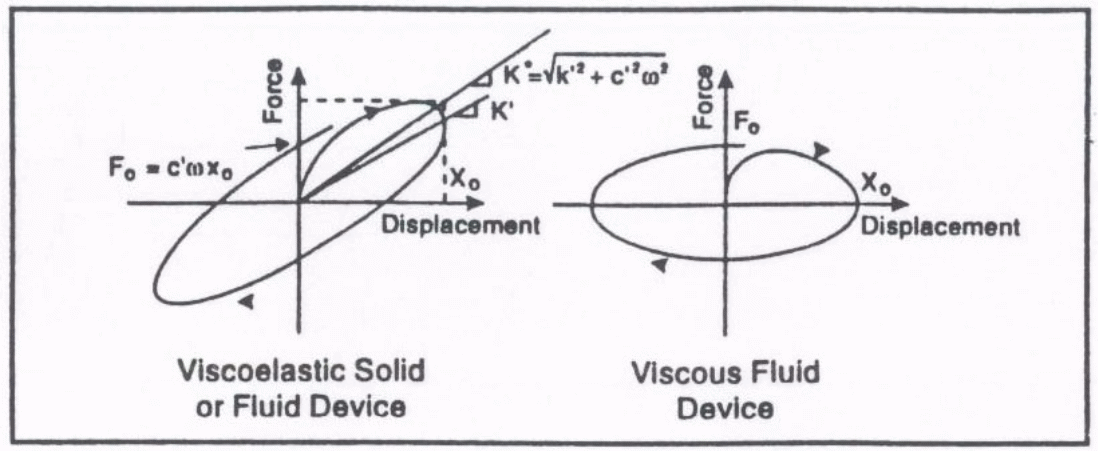
When the devices are incorporated into the base of a building, they provide the base isolation method the desired characteristics to overcome the effects of the forces.
According to Sahasrabudhe and Nagarajaiah (2005, p.89) hysteretic and viscoelastic systems have been incorporated with other systems for use in bases isolation systems. While there are several advantages associated with the use of Hysteretic and Viscoelastic systems, other elements which have been incorporated into the base isolation systems include the elastomeric bearings. Other base isolation systems include the friction pendulum bearing, and the supplemented damping device.
Elastomeric bearings
The elastomeric bearings have widely been used to provide the required support for bases isolated systems. Rubber is the most widely used material for purpose of making the elastomeric bearing (Boardman & Wood 2002). The rubber bearing is made of steel plates and rubber layers bonded together to provide the material with the required horizontal and vertical rigidity to ensure that the building moves without transferring the energy into the building (Boardman & Wood 2002). Vertical rigidity is appropriate to ensure that the vertical weight of the building is supported and the horizontal flexibility is provides to ensure that the destructive effects of the horizontal forces are converted into gentle movements, which do not have destructive effects on the building (Boardman & Wood 2002).
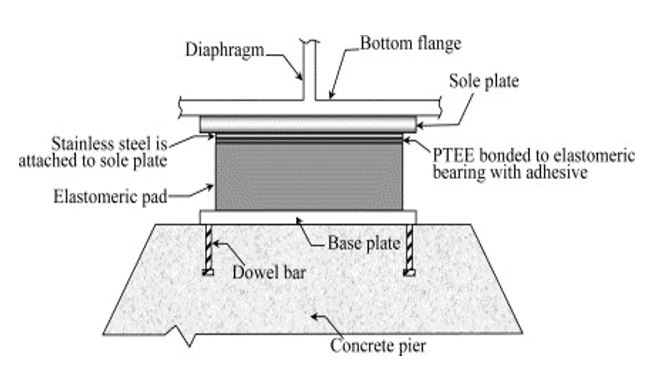
On the other hand, a sliding mechanism is provided to make the system absorb the shear forces across the points of contact between the solids. Bearing pads are used to support the building and when an earthquake happens, the building freely slides on the bearings and makes it sustain its integrity (Axinti & Scheaua 2010).
Case Study-Japan
Different cases exist, which demonstrate the successful use of base isolation techniques to preserve the integrity of buildings in earthquake vulnerable regions (Pletcher & Rafferty 2014). After the concept of the base isolated buildings was widely accepted in many parts of the world, Japan provides a number of case studies where the concept has been applied to build earthquake resistant structures 9(Pletcher & Rafferty 2014). Among the earthquake vulnerable areas subjected to the destructive effects of earthquakes is Japan as shown on the diagram below.
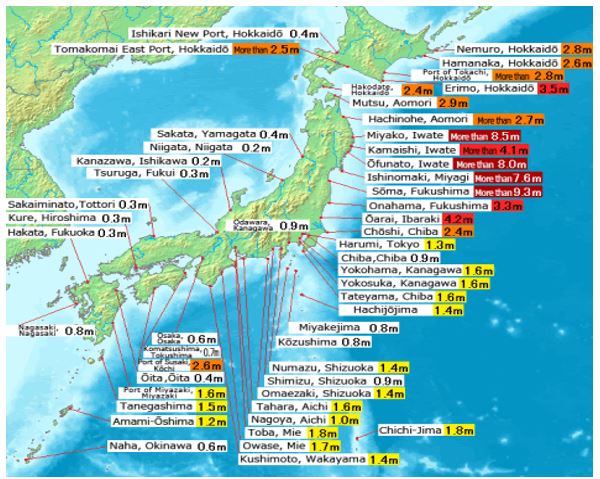
The above diagram is a good example of the lines along which the seismic forces have been experienced in Japan. The diagram shows areas, which have designated with different forces of the great earthquake of Japan, which occurred in March 2011. The main earthquake occurred in the region with varying degrees of seismic activities and aftershocks. The seismic intensity of the earthquake are marked, which were experienced in different parts of Japan. As aftershocks, the earthquake triggered destructive effects in the form of tsunamis along the Japanese coastline. In some cases, the tsunami travelled some 10 km inland with its destructive effects.
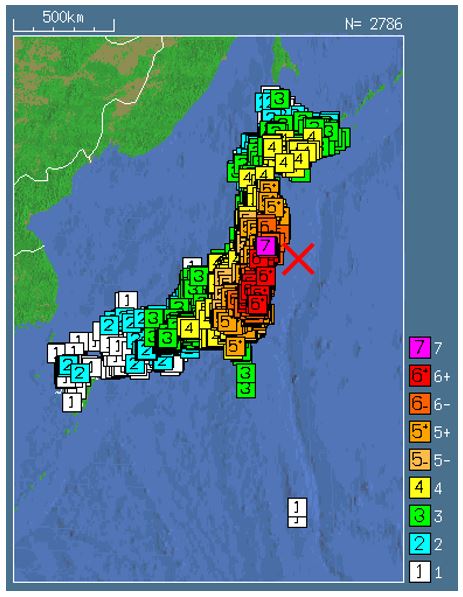
It has been established that different regions of the world experience different intensities of earthquakes and the responses of the buildings toward the earthquakes depend on the type of base isolation mechanisms used and the earthquake intensity.
Among the examples include the earthquake at the Turkey’s Sabiha Gokcen International Airport (SGIA), which covers an area of 20,000 square meters, which is populated with buildings which are over 48 meters tall and on a region, which has experienced earthquake activities of 8.1 on the Richter scale (BCIT: Earthquake Effects n.d). To address the problems common in areas with high earthquake intensities such as Turkey and Japan, the use of base isolated structures provide a clear example of the solutions that have been suggested and technically applied. Different types of base isolation mechanism exist and have been used in earthquake situations mentioned above (BCIT: Earthquake Effects n.d).
One of the examples of a base isolated building is the one located on the city of Kobe in Japan. The building is located 35 km from the Hyogoken-Nanbu earthquake epicenter, which experienced an earthquake of 7.2 magnitudes on the Richter scale. The building is made of reinforced concrete, which are supported by base isolators, which are made of rubber dumpers. Each floor has an accelerometer installed on the foundation of each of the floors of the building, which is made of three floors (BCIT: Earthquake Effects n.d). It is possible to collect the dynamic characteristics of the building using the seismic response data installed and able to work on the NS and EW directions.
During a seismic activity, the forces, which act on the building, are horizontal to building because the seismic activity generates motion which is horizontal to the surface of the land (Taylor & Duflot 2005). If the structure is subjected to the seismic forces with a period of 0.13 seconds, the action of the bearings of the dampers, which act to absorb the forces move freely in all directions (Nedelcut 2012). It implies that the forces of mass of the building are acting vertically downwards and the seismic forces are acting horizontally (Taylor & Duflot 2005). Here, horizontal displacements occur and the forces causing the displacements, which have to been absorbed (Taylor & Duflot 2005). Typically, researchers agree that a damper is the most appropriate equipment to use to absorb the horizontal forces (Nedelcut 2012). Practical examples show that lateral forces can be significantly reduced because of the period mentioned above.
Response of base isolated structures
Bases isolated structures must experience different kinds of forces, which are produced by the action of seismic forces, which are caused by the movement of the earth in the horizontal direction. The lateral forces created in such a manner are likely to cause the building to experience lateral forces which are resisted by the use of base isolated installations (Nedelcut 2012). The forces occur as lateral forces and the dumping is done as viscous damping forces and the fundamental period is usually elongated because of the shear deformation of the isolators.
It is evident from the study and the analysis that the base isolated structure reduces the effects of the ductile forces that act on it because of the low ductility demand placed on the structure (Taylor & Duflot 2005). It is possible to increase the base isolation of a short –period building by a significant margin of 0.7 seconds, which allows the structure to respond to moderate to low amplitude vibrations. If the earthquakes are more severe and the periods are much longer, it is possible for the base isolators to distribute the shears uniformly among the dampers to ensure that the structural integrity of the building is maintained (Taylor & Duflot 2005). In addition, it has been established in a number of investigations that the dominant period and the angular accelerations of the ground have to be the same to ensure that the isolators are able prevent the occurrence of the torsionalforces, which occur as a result of dynamically occurring amplifications (Taylor & Duflot 2005).
Damping and Energy Dissipation
The large amounts of energy that are generated during an earthquake are the main causes of the destructive effects observed when earthquakes occur. It has also been established that the use of dampers and other mechanisms used to prevent the destructive effects of the earthquakes are based on the absorption of the energy, which is generated from the earthquakes. The rationale is that the structures are able to resist the forces effect of the forces through the dissipation effects of the forces (Taylor & Duflot 2005).
Research shows that the input energy from the earthquake during seismic activities occurs as strain and kinetic energies, which need to be dissipated. Heat has been observed to be one of the methods of dissipating the large amounts of energy generated from the actions of the earthquake (Taylor & Duflot 2005). When the energy is generated as heat, the destructive effects resulting from the dissipation of the heat energy can cause buildings to burn down and cause other undesirable effects.
Different structures respond differently to the energy created from earthquakes. Large earthquakes generate large amounts of energy, which are dissipated it the form of destruction of structures (Axinti 2010). However, energy dissipating systems have been designed to absorb and reduce the destructive effects of the energy, which is as a result of the effects of earthquakes (Axinti 2010). Here, the absolute energy, which is the energy released by an earthquake is sum of the strain energy, the absolute kinetic energy, the elastic recoverable energy, energy due to the supplemental energy, and energy, which is released by the structural system (Axinti 2010).
When the energy due to the structure of the system is increased, it means that the structural performance of the system is increased to enable the structure to resist and maintain the integrity of the system (Axinti 2010). Typically, the integrity of the system is maintained by the use of a supplementary energy dissipation system. The systems include hydraulic and mechanical dampers, which are integrated into the structure or incorporated into the base isolation system (BCIT: Earthquake Effects n.d). A wide range of devices have been designed, developed, and tested and found to be appropriate for use to damp the energy dissipated from the actions of a seismic activity (Taylor & Duflot 2005). Those devices include viscoelastic dampers, mechanical dampers, hysteresis dampers, frictional dampers, and viscoelastic solid and fluid dampers (Axinti 2010).
Fluid Dampers
Fluid is the main component that is used to dissipate the seismic energy, which acts on the fluid damper (Taylor & Duflot 2005). The energy dissipation mechanism involved the use of a piston, which transforms the mechanical energy by deforming the highly viscous fluid in the damper (Taylor & Duflot 2005).
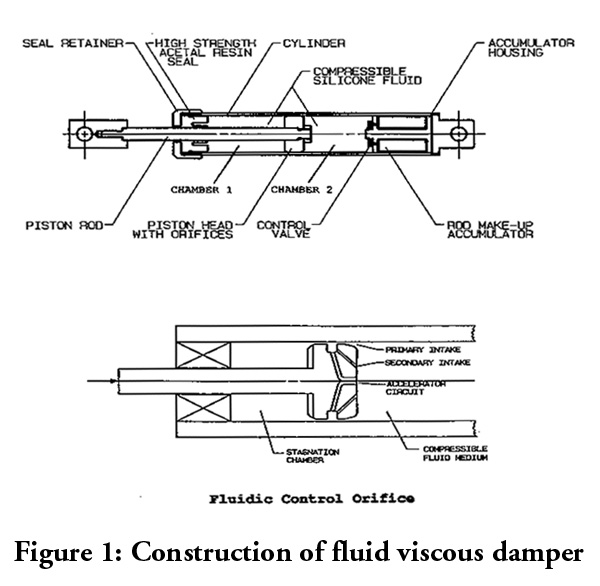
The chevron bracing system of base isolation damper, which use the vicious fluids to dampen the energy generated from the seismic activities are made of spherical bearings at both ends (Taylor devices Inc: History, design and applications of fluid dampers in structural engineering 2014). Mounting pins are used to connect the dampers to the base of the building frames and foundation of the building. Some of the dampers provide a rotation of 50 to accommodate different types of movements when seismic vibrations act on the building (Taylor devices Inc: History, design and applications of fluid dampers in structural engineering 2014).
The fluid damper is made of a steel cylinder, pistons, which move within the cylinder, and a highly viscous fluid, which is used to absorb the energy caused by the seismic activities (Skinner & McVerry 1975). The damper operates on the principles of fluid flow and compression to absorb the energy released in an earthquake. Once the force has been applied on the damper, there is a releasing force that is applied by the fluid to restore the damper (Skinner & McVerry 1975). An orifice design is used to control the flow of fluid in the cylinder and to control the temperature of the fluid and the damper to ensure that the system temperature remains within the acceptable range. A bimetallic thermostat provides the temperature controlling capabilities in the system to ensure that the system temperature remains between -40C and 70C. The use of a fluid the passive nature of the actions of the system, the acceleration, speed, and displacement actions of the fluid dampers differentiates them with other devices used to isolate a building (Skinner, McVerry 1975).
Friction dampers
Friction dampers were invented in 1979 and function by absorbing the friction due to the slip loads, which are caused by the seismic vibrations of the earth when they are transferred to a building. It has been demonstrated that the friction dampers work well in absorbing the seismic energy based on the highly nonlinear hysteresis loops of the system. To ensure that the operation are secure, the system works well when it is installed at the cross bracing of the building frames. The dampers have been known to be effective when the numbers of storey of a building are small.
It has been demonstrated through experiments that when the building is isolated with friction dampers, the building acts as a braced frame, which is used to resist the shear forces that act on it. The cantilever actions and those of the diagonal body members of the structure contribute to make the building more resistant to the axial forces, which are applied on the building. In addition, the frame acts by preventing the action of the forces of gravity on the building. To ensure that the system remains elastic to avoid any deformation, which might be caused by the action of seismic forces on the joints, the joints are allowed to slip to a certain extent, especially when the earthquakes are minor. As the motion of the ground starts to accelerate, the damping capability of the friction damper increases until it achieves a certain value of deformation. Research shows that the number of dampers has to be installed at the base of the building to overcome the effects of the seismic vibrations. The number of dampers depends on the cost, the weight of the dampers, and other structural; adjustment factors.
The use of friction dampers is limited to the type of structures it is applied because of the type of forces, which act on the structures. It has been determined in different studies that the forces include shear, rigid frame lateral forces, and other elastic deformation forces. The technical and cost benefits of the use of friction dampers include low initial installation costs, low retrofit costs, simplified methods of installations, low maintenance costs, ability to dissipate large amounts of energy, and do not require any repairs and replacements once an earthquake happened.
Shear Walls
According to Dowerick (2009, p.34), shear walls are popular with the design of earthquake resistant buildings because of the proven performance they have shown when exposed to various types of seismic vibrations. Shear walls are made is such a way that they possess the vertically positioned wide oriented beams. The design allows for the different sections of the building, which include the floor, roof, and foundation to née tied together to provide the resistance required to counter the actions of lateral load, which are caused by the action of seismic vibrations (MCEER Earthquake Engineering to Extreme Events: Advanced Earthquake Resistant Design Techniques 2010). Different material, which have been used to make the shear walls include concrete, timber, masonry, and steel. Studies by Dowerick (2009, p.34) shows that shears provide the resistance to the action of shear forces and the main property that makes them suitable for use is the ductile property. According to Dowerick (2009, p.34), ductility is feasible when used in slender walls, which is difficult to achieve with thick stock.
A research by Dowerick (2009, p.39) shows that shear walls are most suitable for use in storey buildings, which are 20 meters high. It has been demonstrated through technical studies that the use of shear walls provides improved stiffness for higher rise buildings when used with frame systems. Shear walls to not suffer from a range of weaknesses such as the pancake effect, which has been shown to be prevalent in framed systems (Historic earthquakes n.d)
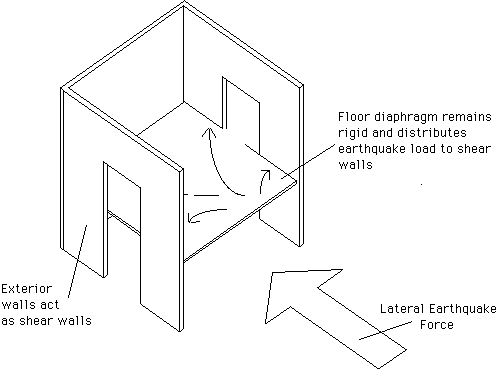
Shear walls are designed with a maximum thickness of 400 mm and the lowest thickness of 150 mm. Shear walls are installed symmetrically to the vertical and horizontal planes of a structure and are designed to make symmetrical openings with the walls of the structure where they are installed. To make the shear walls effective and of higher performance, they are usually installed at the exterior perimeter of a building. To ensure that the shear wall performs effectively, there is need to make it have a discontinuous connection between the shear wall and the floors or sub-floors where it is installed.
Researchers agree that the connection between the building and the shear wall provides a number of benefits, which include the cost effectiveness, ease of construction and installation, and increased strength of use.
Confined Masonry Construction
Confined masonry constructions provide buildings vulnerable to the destructive effects of seismic vibrations with the ability to resist the effects of the vibrations through various forms of actions. A confined masonry construction is made is such a way that they are able to resist the in-pane and out-plane seismic forces. The resulting structure is able to maintain the integrity and of the masonry wall when the seismic vibrations occur. Masonry structures provide enhanced performance of against the application of lateral loads and are able to contain damaged buildings when they get damaged. In addition, the use of masonry constructions enables the brittleness of the structure to be reduced and an increase in the degree of ductility of the masonry reinforced structure.
To ensure that the masonry reinforced structure is effective, there is need to make narrow openings in the walls to reinforce the structure and provide additional resistance to the action of seismic vibrations. The masonry design has masonry walls, which act against the seismic forces by transmitting the gravity loads through the slabs to the foundation of the building. The walls are designed to provide resistance to the forces, which occur because of horizontal seismic motions. IN addition, the masonry structure is made of tie-columns and tie-beams, which protects the masonry walls for disintegrating completely under the action of gravity loads and are able to preserve the integrity of the building by ensuring that the vertical stability of the wall is maintained.
The floor and roof slabs of the masonry structure enable the building to resist the effects of the seismic forces by transmitting the lateral and vertical loads to the walls of the building by acting like horizontal diaphragms.
Retrofitting
Retrofitting is one of the methods of reinforcing structures to enable them develop earthquake resistant capabilities, which are caused by seismic activities. The structures are enabled resist vibrations, which are caused by ground movements, soil failures, cyclones, tornadoes and other natural disasters, which involve the release of large amounts of energy. Dowerick (2009, p.4-7) has outlined the performance objectives of the retrofit to include public safety, which is the ultimate goals of protecting the lives of the people and any other form of live, which is subject to a collapsing building. The aim is to ensure that if a seismic activity occurs of a significant magnitude to cause severe damage, the occupants have to exit safely from the structure.
Another objective by Dowerick (2009, p. 8) is that the retrofitted structure has to remain serviceable after it has been damaged by an earthquake without the need to build a new structure. In addition, the structure has to retain its utility when it has been retrofitted with different materials to make it safe for use by the occupants.
A report by Dowerick (2009, p. 18) shows that engineers find a lot of difficulties using the retrofit systems because of the lack of retrofitting standards in the construction industry. Different methods have been used to retrofit structures and have shown different responses to the effects of seismic forces. Typically, Dowerick (2009, p. 28) argues that the parameters, which determine the appropriateness of a retrofit include the structure and the amount of damage that can be overcome using the retrofit.
The advantages of retrofitting buildings, which are vulnerable to the destructive effects of seismic activities, underscore the rationale for the need to retrofit such buildings. To determine whether a building should be retrofitted or not, cost benefit analysis should be done to provide the required justification for the use of a retrofit. One consideration is that a retrofitted building, which is 7 storeys high less expensive than one which is 9 storeys high. Dowerick (2009, p. 28) has observed that retrofitting a building should be prioritised according to the type of building and the cost associated with the retrofit. Some of the factors to consider include the vicinity of the structure to the area of active seismic activities, the chances of surviving an earthquake, the desire to improve the safety of the users of retrofitted strictures, and the need to reduce earthquake insurance against the home.
Improving Building Foundations
Improving the foundation on which the buildings are situated has proved to be one of the approaches that are critical in ensuring that the lives of the people are preserved during an earthquake. One approach is to ensure that the buildings are constructed according to the standards and buildings codes, which have been developed for earthquake vulnerable structures and areas. Some of the codes detail the requirements of the construction of wooden structures. In addition, the codes provide the basis for certifying the compliance of buildings. The Japanese use the Shindo-scale of upper 5 for Tokyo to classify different buildings according to their ability to resist the seismic action of forces, which are able to resist the effects of the forces with a seismic intensity of 5. Other issues worth of considering are the soils upon which the structures are positioned. Here, the soils upon, which the structures are constructed, influence the type of structures to be erected and the type of reinforcement to be applied there. That underpins the rational for classifying soils into very soft soils, soft soils, shallow rocks, rocks, ad strong rocks. The foundation that is sued for a building is used to determine the strength of the building, and its ability to resist the lateral forces, which are caused by seismic vibrations and the mass that can be supported on the buildings because of the force of gravity that acts on the supporting structures. Some of the features include establishing deep foundations to enable the structure resist lateral forces, end bearing foundation, concrete filled pile, friction, and combined end-bearing and friction pile.
The Future of earthquake resistant buildings
Different bodies have provides their own technical evaluations of the methods of improving the foundations of buildings to make them resistant to earthquakes. The underpinning goal is to prevent the loss of life when a seismic activity occurs. Harris (2012, p.34) pioneered the creation of a system, which resist the effects of an earthquake by allowing the movements of structures without allowing the vibrations to damage the building, which is subject to vibrational seismic activities. The Rocking Frame system developed by Harris (2012, p.34) makes a system resist very strong vibrations using elastic steel frames that rock about the base where the rocking frame system is installed.
Conclusion and Recommendations
Earthquakes are a historical phenomenon, which occur with different intensities and destruction of property and human lives. It has been established that the main cause of earthquakes are the movement of the tectonic plates, which result in large amounts of energy when the plates either slide or crash on each other. Several earthquakes have happened in different parts of the world with devastating consequences and among them is the Haitian, which destroyed several building and lost lives in the wake. Besides the loss of human lives, there are other effects, which some earthquake vulnerable areas such as Japan are exposed to. Japan has a large number of nuclear reactors in seismically active areas of the country and damaging a nuclear reactor can cause severe consequences to the people and the environment. An example is the 2011 earthquake that struck Japan and caused loss of lives besides creating tsunamis and other aftershocks, which caused severe destruction and the risk of radioactive materials. The results of the movements are intense seismic vibrations, which are referred to earthquakes, which occur in the sea or on the land. Buildings, which are erected on land experience shaking, which vary from mild to severe and the destruction to the buildings’ can either be mild or severe. To address the problems, the problems, different technologies have been developed over the years to counter the effects of the seismic vibrations and one of them is the base isolation technology. The technique uses dampers to help the system absorb lateral and vertical forces, which are caused by seismic movement of the soil. Majorly, the vertical forces are caused by the action the mass of the building because of the force of gravity. It was established in the study that base isolation is the most widely accepted and used concept of addressing the problem of maintaining the integrity of buildings. The base isolation mechanism allows for the use of different type of dampers, which include viscous dampers, friction, and other types of dampers to reduce the transmission of energy into the body of a building to protect it from destruction.
References
Axinti, G & Scheaua, F2010, ‘Dynamic Hydraulic Dampers for Earthquake Isolated Structural Systems’, Research Centre for Mechanics of the Machines and Technological Equipments, vol. 2, no.3, pp. 145.
Boardman, P& Wood, B 2002, Base-isolating New Zealand Parliament Buildings. Web.
Booth, E 1994, Concrete structures in Earthquake Regions: Design and Analysis, Longman Scientific and Technical, London.
BCIT: Earthquake Effects n.d. Web.
Constantinou, MC & Symans, M D 1992, Application of Fluid Viscous Dampers to Earthquake Resistant Design, Technical Report NCEER-92-0032, vol. 1, no.2, pp. 79
Day, RW 2002, Geotechnical Earthquake Engineering Handbook, McGraw-Hill, New York.
Disaster Emergency Committee: Haiti Earthquake Facts and Figures 2011. Web.
Dowerick, D 2009, Earthquake Resistant Design and Risk Reduction, Wiley and Sons, New York.
Plate Tectonics: The Story of Plate Tectonics 2014. Web.
Historic earthquakes n.d. Web.
Haiti Earthquake: Haiti: Ecological Problems and the Fix-all 2010. Web.
Harris, W 2012, How Earthquake-resistant Buildings Work. Web.
Harris, W 2005, How Car Suspensions work. Web.
Huang, HC 2009, ‘Efficiency of the motion amplification device with viscous dampers and its application in high-rise buildings’, Earthquake Engineering and Engineering Vibration, vol. 8, no. 4, pp. 521-536.
Kelly, JM 1998, National Information Service for Earthquake Engineering – Base Isolation: Origins and Development. Web.
MCEER Earthquake Engineering to Extreme Events: Advanced Earthquake Resistant Design Techniques 2010. Web.
Nedelcut, F 2012, Energy dissipation device using fluid dampers. Web.
Pletcher, K & Rafferty, J P 2014, Japan Earthquake and Tsunami of 2011. Web.
Plate boundaries with major strike-slip components n.d. Web.
Sahasrabudhe, S & Nagarajaiah, S 2005, ‘Experimental Study of Sliding Base-Isolated Buildings with Magnetorheological Dampers in Near-Fault Earthquakes’, Journal of Structural Engineerin, vol. 3, no.5, pp. 1025-1033.
Skinner, RI & McVerry, GH 1975, ‘Base Isolation for Increased Earthquake Resistance of Buildings’, Bulletin of the New Zealand Society for Earthquake Engineering, vol. 8, no.2, pp. 93-101.
Taylor, D & Duflot, P 2005, Fluid Viscous Dampers used for Seismic Energy Dissipation in Structures’ Taylor Devices Inc. Longman Scientific and Technical, London.
Taylor devices Inc: History, design and applications of fluid dampers in structural engineering 2014
The International News: New Zealand Earthquake Kills 65 2011. Web.
Historic Earthquakes n.d. Web.
Earthquakes with 50,000 or More Deaths 2012. Web.
One Year After the Japan Earthquake: A Journey, Part 1 2012. Web.
Yup Rocks: Rock Mineral, Fossil and Earthquake Photography 1989. Web.
Zekioglu, A, Darama, H & Karahasanoglu, S 2010, ‘Seismic Sophistication’, Civil Engineering Magazine, vol. 2, no. 4, pp. 64-69.